The 25 Best No-Load Mutual Funds You Can Buy
The key to building wealth long-term is buying high-quality, no-load mutual funds run by seasoned stock pickers. Here are our favorites.
- (opens in new tab)
- (opens in new tab)
- (opens in new tab)
- Newsletter sign up Newsletter

The Kiplinger 25 list of our favorite no-load mutual funds dates back to 2004, and our coverage of mutual funds goes all the way back to the 1950s. We believe in holding funds rather than trading them, so we focus on promising mutual funds with solid long-term records – and managers with tenures to match.
After several seasons of unpredictable market conditions, a spring cleaning can bring a sense of order to things. We're talking about your portfolio, of course. Moves you make now to ensure you hold the right mix of funds could be richly rewarding later. As renowned value investor Shelby Davis once said, "You make most of your money in the bear market. You just don't realize it at the time."
Given that most markets – and funds – have declined over the past year, smart investors will carve out time now to review their portfolio and make any necessary adjustments. A good mix of holdings will include both stocks and bonds, pay adequate attention to small and large companies – foreign and domestic – and be balanced between value-priced shares and growth stocks.
A broad assortment is key, because in coming years it is less likely that any one sector or small group of stocks will dominate market leadership, as was the case pre-pandemic, says Ken McAtamney, head of William Blair's global equity team. "We believe that diversity of growth, industries and business models at appropriate levels of valuation will make for optimal investment returns."
This year, in our annual review of the Kiplinger 25, we're making two changes. Parnassus Mid Cap (PARMX (opens in new tab)), which has been on watch for two years, is out. The fund tends to do well during down-markets and lag in upswings. But lately it has trailed in both types of markets. Its replacement, Heartland Mid Cap Value (HRMDX (opens in new tab)), is a better complement to the other Kip 25 strategies because it is invested more in mid- and small-cap stocks than the Parnassus fund; it tilts more toward value, too.
The other change: Metropolitan West Total Return Bond (MWTRX (opens in new tab)) is out, and Baird Aggregate Bond (BAGSX (opens in new tab)) is in. The MetWest fund has lagged both the broad bond market and peer funds over the past three and five years. We liked the fund's leeway to invest in below-investment-grade sectors, such as high-yield bonds, bank loans and emerging-markets debt. But today's higher interest rates mean there's little need to goose yield with lower-quality credit, so we sought a more basic intermediate core bond fund. "There’s no need to take on much risk to earn a good yield these days," the Baird managers told us. We agree.
Here are our picks for the best 25 no-load mutual funds: what makes them tick, and what kind of returns they've delivered.
Data is as of Feb. 28, unless otherwise noted. Five- and 10-year returns are annualized. Yields on equity funds represent the trailing 12-month yield. Yields on balanced and bond funds are SEC yields, which reflect the interest earned after deducting fund expenses for the most recent 30-day period.

Dodge & Cox Stock
- Symbol: DODGX (opens in new tab)
- 1-year return: -3.8%
- 5-year return: 9.1%
- 10-year return: 12.0%
- Yield: 1.3%
- Expense ratio: 0.51%
The focus: Stocks in midsize-to-large firms with good prospects that are bought when shares are cheap.
The process: The fund's seven managers weigh a stock's price against a variety of factors, including a firm's financial strength; its competitive advantages; environmental, social and corporate governance (ESG) issues the managers deem financially material; and the experience and competence of company executives.
The track record: Stock's six-month gain of 5.5% beat the S&P 500 by four percentage points. Stakes in energy stocks helped, as did healthcare positions, including Gilead Sciences (GILD (opens in new tab)).
The last word: Every well-diversified portfolio needs a good value fund, and Dodge & Cox Stock is a standout.

Fidelity Blue Chip Growth
- Symbol: FBGRX (opens in new tab)
- 1-year return: -19.3%
- 5-year return: 11.7%
- 10-year return: 15.2%
- Yield: 0.0%
- Expense ratio: 0.76%
The focus: Shares in fast-growing companies of any size (most are large).
The process: Manager Sonu Kalra hunts for companies with potential for above-average earnings growth that the market has misjudged. He favors firms with competitive advantages, pricing power (the ability to raise prices without hurting demand), and executives who can deliver superior profits over the long term. A catalyst to drive earnings – a new product, say – is a plus.
The track record: Blue Chip Growth sank 19% over the past year, thanks to rising interest rates, which slashed the value of growth stocks. The fund holds the usual mega caps, including Microsoft (MSFT (opens in new tab)), as well as stakes in small companies with potential for future profits.
The last word: The fund is best suited for intrepid investors with a long time to invest. Its 12.6% 15-year annualized gain beat the S&P 500 by an average of 2.8 percentage points per year.

Mairs & Power Growth
- Symbol: MPGFX (opens in new tab)
- 1-year return: -8.6%
- 5-year return: 9.5%
- 10-year return: 10.5%
- Yield: 0.8%
- Expense ratio: 0.61%
The focus: Stocks in growing firms trading at reasonable prices.
The process: The fund has a quirk: The managers invest about two-thirds of the fund's assets in companies based in the upper Midwest, near Growth's home turf in St. Paul, Minnesota.
The track record: The managers avoid energy stocks, as they expect demand will slow for fossil fuels, but that was a drag on results in 2022. The fund declined 21%, compared with an 18% loss in the S&P 500. The fund also lagged its peers, large-cap funds with a blend of growth and value stocks.
The last word: Unlike its peers, this fund invests in companies of all sizes and tilts more toward growth. Over the past 15 years, the fund outpaced peers but just missed beating the S&P 500.

Primecap Odyssey Growth
- Symbol: POGRX (opens in new tab)
- 1-year return: -4.0%
- 5-year return: 6.3%
- 10-year return: 12.5%
- Yield: 0.5%
- Expense ratio: 0.65%
The focus: Fast-growing, midsize-to-large companies
The process: Five managers divide the assets and pick stocks independently, but all seek firms with long-term potential that the market has underestimated.
The track record: The fund lagged the S&P 500 for four straight years, but pulled out a win in 2022, helped by a slug of healthcare stocks, as that sector gained ground over the past year.
The last word: Slumps are inevitable, but patient investors have reaped rewards. A $10,000 investment when the fund launched on Nov. 1, 2004, would be worth $63,400 today; a similar bet in an S&P 500 index fund would be worth $49,000.

T. Rowe Price Dividend Growth
- Symbol: PRDGX (opens in new tab)
- 1-year return: -2.2%
- 5-year return: 10.7%
- 10-year return: 12.1%
- Yield: 1.1%
- Expense ratio: 0.62%
The focus: Stocks in high-quality companies that are expected to raise dividends. The fund yields 1.1%.
The process: Manager Tom Huber prefers firms that have strong balance sheets, throw off plenty of cash and increase dividends. Top holdings include Microsoft and Apple (AAPL (opens in new tab)). Last year, the fund added several new positions, including Walmart (WMT (opens in new tab)) and Keurig Dr. Pepper (KDP (opens in new tab)).
The track record: Dividend Growth lost 2.2% over the past 12 months, which beat the S&P 500. The fund beat the broad-market benchmark over the past five years, too.
The last word: The best dividend stocks can hold up well in dicey markets. "Downside support has been a consistent feature of the strategy," says Huber.
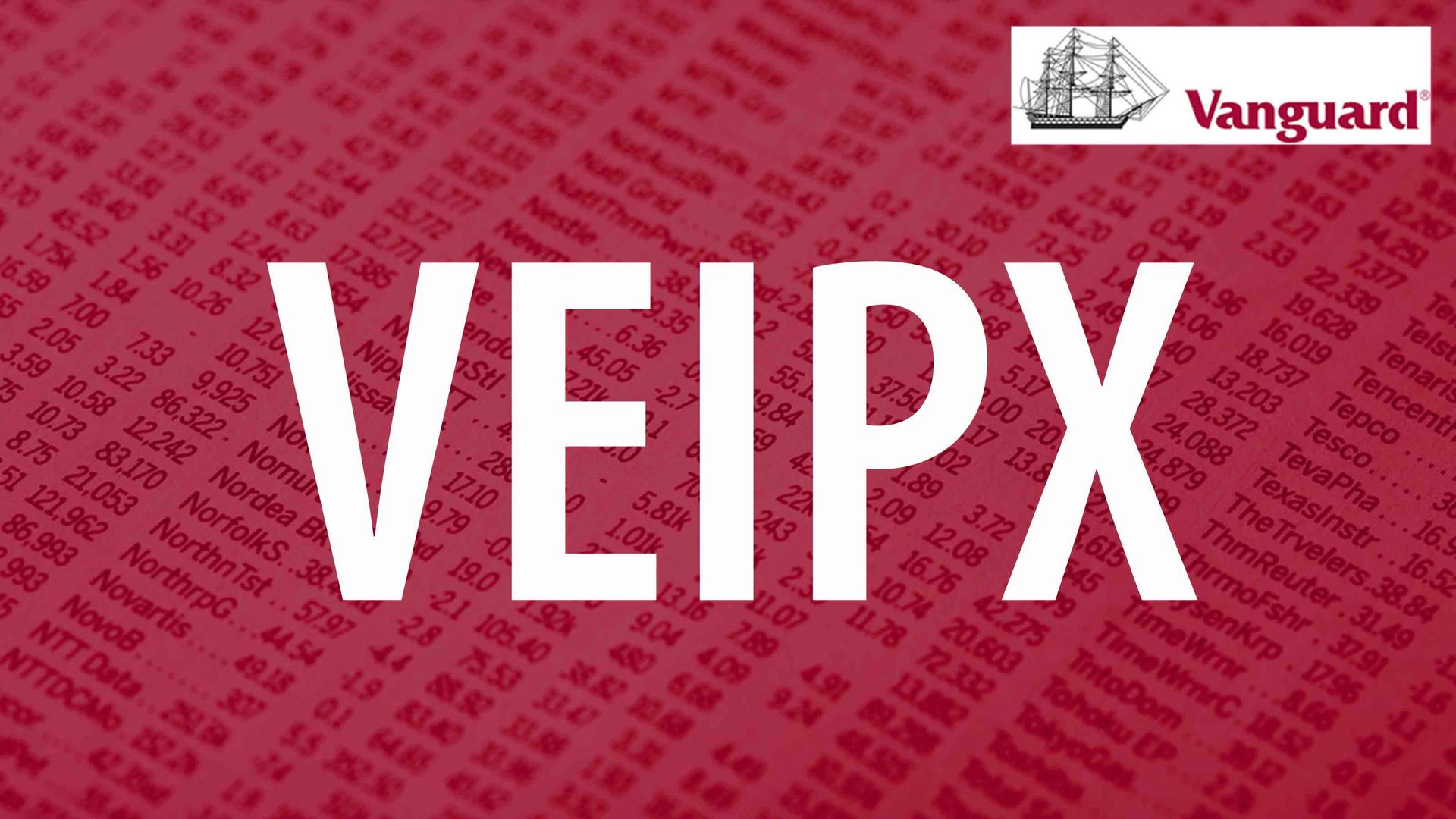
Vanguard Equity-Income
- Symbol: VEIPX (opens in new tab)
- 1-year return: 0.2%
- 5-year return: 8.8%
- 10-year return: 10.7%
- Yield: 2.8%
- Expense ratio: 0.28%
The focus: Big companies that pay fat dividends. The fund yields 2.8%.
The process: Two advisers run the fund. Wellington Management's Matthew Hand manages two-thirds of the assets; Vanguard's quantitative equity group runs the rest. Hand likes companies with above-average dividend yields trading at below-average valuations. Vanguard's group, headed by Sharon Hill, homes in on sustainable dividend growth, positive market sentiment, strong financial health and high dividend yields.
The track record: Both managers are new-ish (since 2021), but we like what we see so far. The fund beat the S&P 500 over the past year, with a 0.2% return, and with less volatility. Hand's top performers include Pioneer Natural Resources (PXD (opens in new tab)) and ConocoPhillips (COP (opens in new tab)); Hill's are H&R Block (HRB (opens in new tab)) and EOG Resources (EOG (opens in new tab)).
The last word: Dividends help lower volatility and boost total returns.

DF Dent Midcap Growth
- Symbol: DFDMX (opens in new tab)
- 1-year return: -11.5%
- 5-year return: 7.8%
- 10-year return: 11.0%
- Yield: 0.00%
- Expense ratio: 0.85%
The focus: Stocks of midsize, growing companies.
The process: The managers favor "best in class" companies, defined as those having leading market-share positions, sustainable earnings growth, and management teams known for integrity and good corporate governance.
The track record: The fund was on fire until the pandemic. Since then, it has lagged its peer group (midsize-company growth funds) enough to drag down its long-term returns. Midsize growth stocks suffered in 2022 along with other fast-growing stocks, which don't do well in rising-rate environments. Although mid-cap stocks overall have rebounded over the past six months, growth-oriented stocks are still lagging. The portfolio was light on energy stocks, too, which hurt because that sector outperformed.
The last word: Over time, this fund's focus on quality should help it shine.
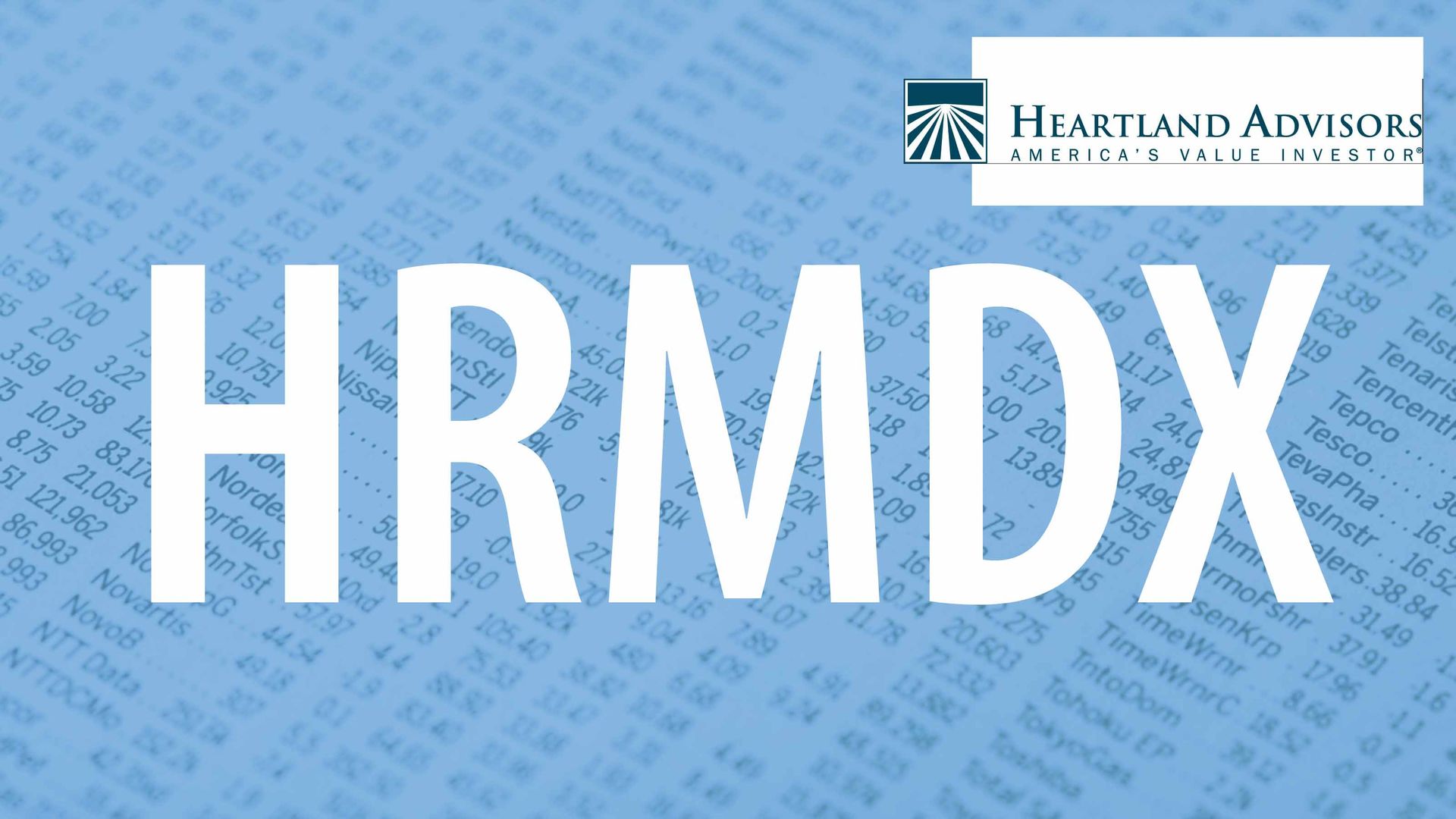
Heartland Mid Cap Value
- Symbol: HRMDX (opens in new tab)
- 1-year return: 3.5%
- 5-year return: 10.0%
- 10-year return: N/A
- Yield: 0.5%
- Expense ratio: 1.10%
The focus: Undervalued midsize- and small-company stocks.
The process: Prospective stocks must fall within the Russell Mid Cap Value universe (shares in the index had a $21 billion average market value at last report) and score well on at least seven of 10 criteria.
Half of those criteria are tied to value-oriented or financial-health metrics, such as low price-earnings multiples or low debt. The other half focus on qualitative measures, such as the strength of the firm's leaders, their business strategy or whether there's a catalyst to drive earnings.
"Getting the five qualitative principles right has been the biggest determinant of whether we're right on the stock," says Colin McWey, one of three comanagers.
The track record: The managers have delivered above-average returns with below-average risk since the fund's inception in 2014. They balance the portfolio between two types of value stocks – deeply discounted shares and high-quality companies that trade at bargain prices.
"The return patterns of these two buckets can fluctuate wildly," says McWey. "The only way to give yourself a chance of beating the mid-cap universe is to invest in both."
The last word: Stocks in the fund have an average market value of $11 billion. Oil and gas drilling equipment and products supplier NOV (NOV (opens in new tab)) is a top holding, as are PPG Industries (PPG (opens in new tab)) and Teradata (TDC (opens in new tab)).

T. Rowe Price QM U.S. Small-Cap Growth
- Symbol: PRDSX (opens in new tab)
- 1-year return: -5.3%
- 5-year return: 7.1%
- 10-year return: 10.9%
- Yield: 0.00%
- Expense ratio: 0.78%
The focus: Fast-growing small and midsize companies. Stocks in the fund, formerly called QM U.S. Small-Cap Growth Equity, have an average market value of $5 billion.
The process: A computer model guides the stock picking for this fund. But manager Sudhir Nanda also layers in the opinions of Price analysts to settle on high-quality firms with decent profitability trading at attractive prices.
The track record: The fund's value tilt helped it beat 81% of its peers (small-cap growth funds) over the past year as value shares outpaced their growth siblings recently.
Over the past five years, the fund's 7.1% annualized return lagged its peers but beat the Russell 2000, a broad small-stock index.
The last word: The fund tends to hold up in tough times better than peers and lag during good times.
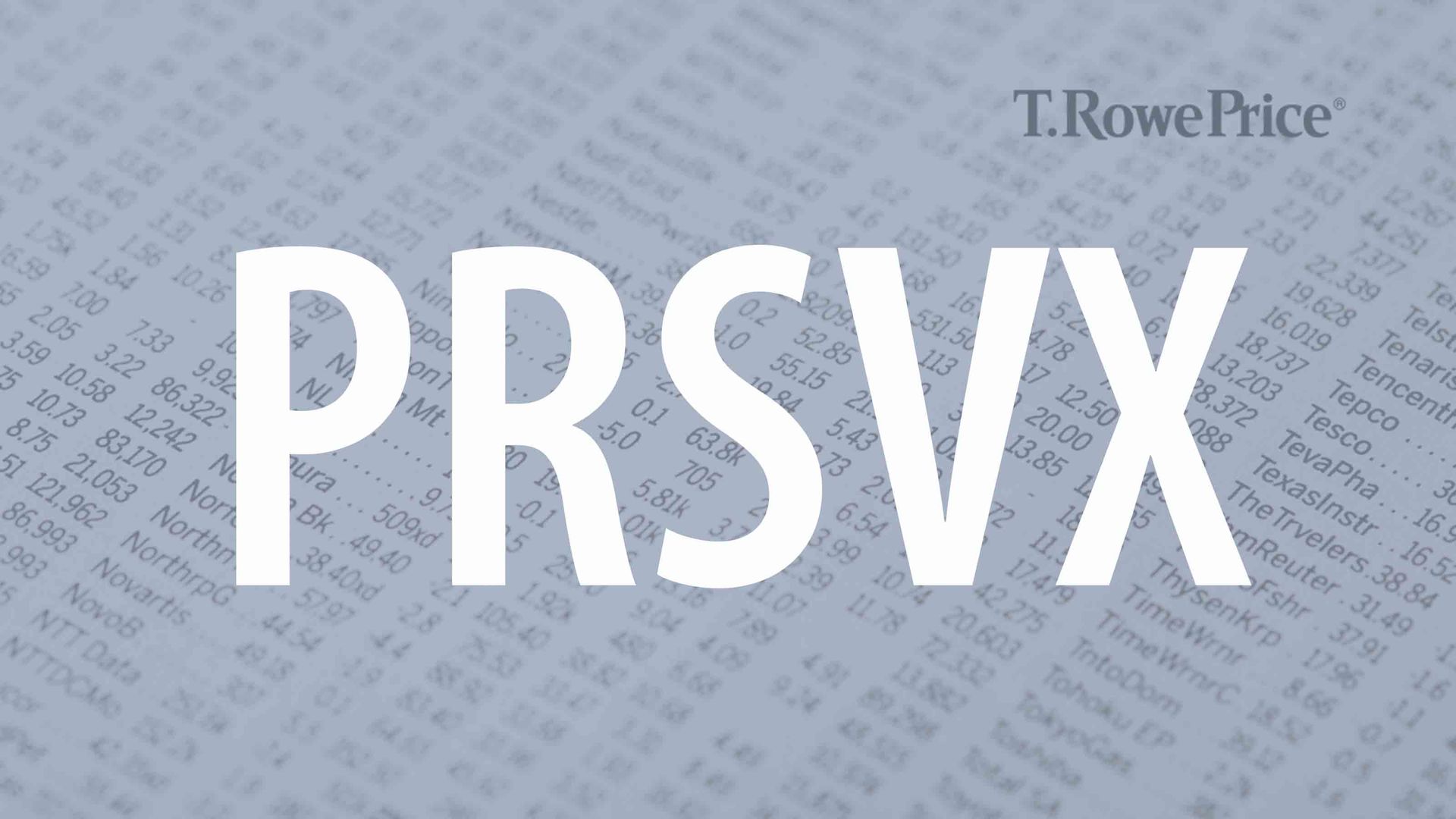
T. Rowe Price Small-Cap Value
- Symbol: PRSVX (opens in new tab)
- 1-year return: -5.4%
- 5-year return: 7.4%
- 10-year return: 9.1%
- Yield: 0.3%
- Expense ratio: 0.78%
The focus: Undervalued small-cap stocks. The average holding has a market value of $2.5 billion.
The process: Manager David Wagner favors well-managed, profitable firms with strong balance sheets and good revenue growth. He buys when prices are cheap. Most recently, he picked up shares in biotech Apellis Pharmaceuticals (APLS (opens in new tab)) and healthcare tech firm Phreesia (PHR (opens in new tab)) as those stocks sank in 2022.
The track record: The fund beat the Russell 2000 over the past 12 months, thanks in part to its energy stocks.
The last word: The fund outclassed its typical peer (small blend funds) in seven of the past eight calendar years

Baron Emerging Markets
- Symbol: BEXFX (opens in new tab)
- 1-year return: -18.3%
- 5-year return: -3.4%
- 10-year return: 2.5%
- Yield: 0.0%
- Expense ratio: 1.33%
The focus: Emerging-markets stocks. China, India and South Korea are its biggest country exposures.
The process: Manager Michael Kass invests in firms of all sizes with growth themes in mind, such as the spread of fintech or India's economic growth.
The track record: Emerging-markets stocks had a terrible year. The fund lagged its peers and the MSCI EM Index. In part, that was due to big bets on Russia and China, markets that floundered for much of the past year.
The last word: There's hope for a turnaround this year. Shares in developing markets started 2023 near a 30-year low on a number of measures relative to U.S. stocks, says Kass. Plus, developing economies and company earnings are poised for improvement: Stronger local currencies relative to a weakening dollar buoy emerging economies, and the reopening of China will be an added shot of adrenalin.

Brown Capital Management International Small Company
- Symbol: BCSVX (opens in new tab)
- 1-year return: -14.0%
- 5-year return: 5.5%
- 10-year return: N/A
- Yield: 0.0%
- Expense ratio: 1.31%
The focus: Small and midsize foreign firms in developed countries. Stocks in the fund have an average $2.7 billion market value. The U.K., France and Japan are its top country exposures.
The process: The managers hunt for what they call exceptional growth companies. Those include firms that, among other things, provide products or services that customers cannot live without; boast business models that others find difficult to compete with; and have smart managers at the top.
Top holdings include Interparfums, a perfumes and cosmetics firm, and Lectra, which makes software and cutting-room systems for textiles.
The track record: Small and growth-oriented stocks were pummeled over the past year, and the fund lost 14%, lagging its benchmark. Still, comanager Dan Boston says the fund's holdings are solid. Stocks in the fund increased 2022 revenues by 22%, on average, even as their share prices lost ground.
The last word: The fund's five-year annualized returns beat 97% of its peers and walloped its benchmark.
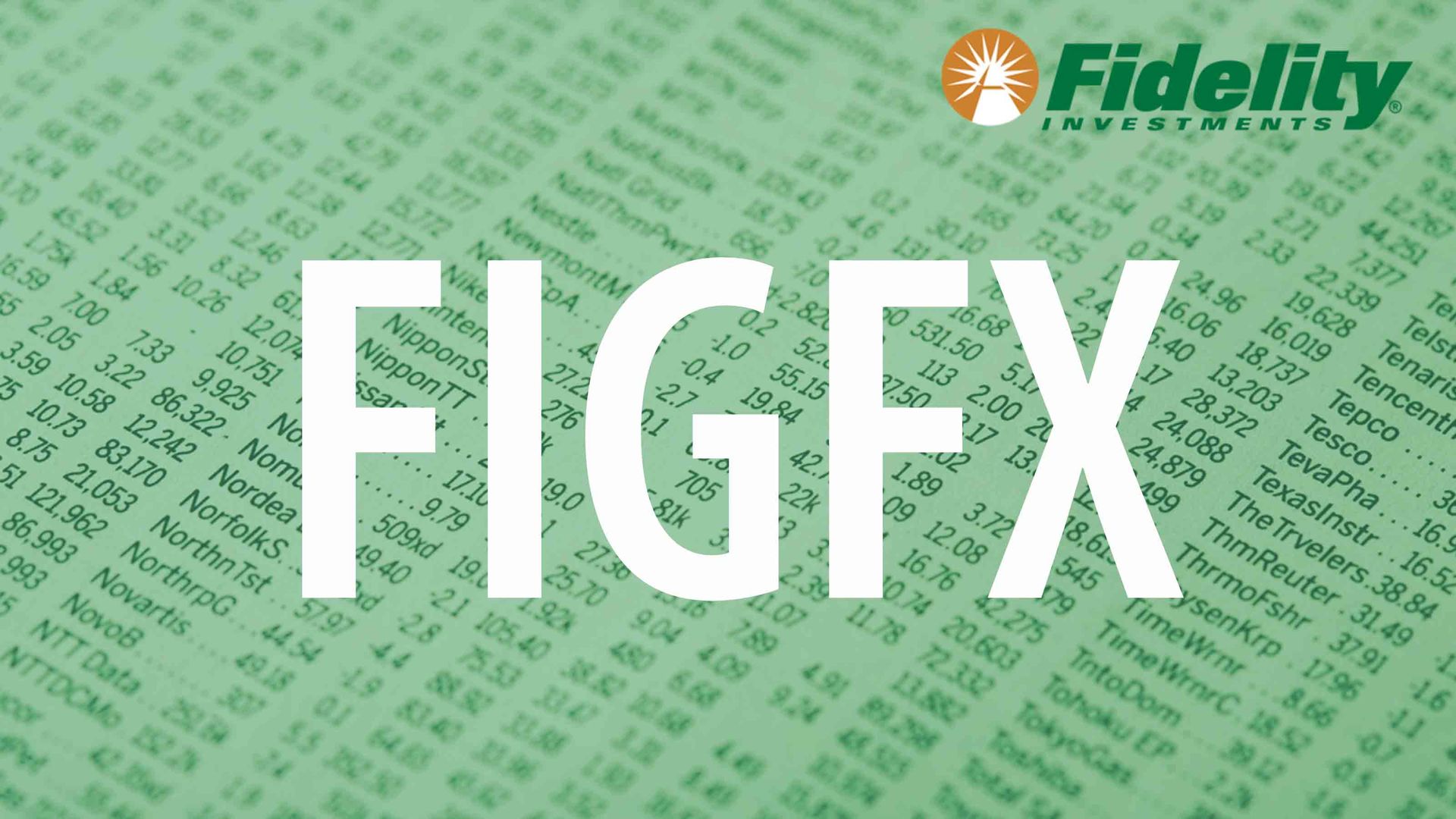
Fidelity International Growth
- Symbol: FIGFX (opens in new tab)
- 1-year return: -7.0%
- 5-year return: 5.2%
- 10-year return: 6.7%
- Yield: 0.2%
- Expense ratio: 1.01%
The focus: Shares in large and midsize growing companies in developed countries. Japan, France and Switzerland are top foreign-country positions.
The process: Veteran manager Jed Weiss looks for industry leaders that can raise prices for products or services without seeing a dent in demand and have strong growth potential. The share price matters, too.
His research usually tips him toward stocks that fit into broad themes, including firms emerging from the pandemic in a stronger position after smart acquisitions. Travel firm Amadeus IT Group (AMADY (opens in new tab)) is one.
The track record: The fund lagged the MSCI EAFE index over the past 12 months. But Weiss's 15-year record, 5.5% annualized, beat the benchmark by nearly twofold. And he has outpaced peers, funds that invest in growing, large foreign stocks, in seven of the past 10 full calendar years.
The last word: This fund's a keeper.

Janus Henderson Global Equity Income
- Symbol: HFQTX (opens in new tab)
- 1-year return: -3.1%
- 5-year return: 2.9%
- 10-year return: 4.7%
- Yield: 3.8%
- Expense ratio: 1.02%
The focus: Large, high-quality foreign companies that pay a dividend. The fund yields 3.8%.
The process: Global Equity Income can have up to 60% of assets in U.S. stocks, but it usually tilts more foreign – 77% of the fund's assets are in non-U.S. shares.
Three comanagers look for firms with strong free cash flow (cash remaining after operating expenses and investments in the business) and solid balance sheets that pay dividends and are bargain-priced relative to similar investments. Top holdings include Unilever (UL (opens in new tab)) and TotalEnergies (TTE (opens in new tab)).
The track record: The fund lost 3.1% over the past year, putting it ahead of the 8.3% loss in the MSCI ACWI, an index of global stocks.
The last word: The fund's cash-flow focus steers the managers clear of debt-laden firms that might look cheap. That has helped in recent years, says comanager Ben Lofthouse.

Fidelity Select Health Care
- Symbol: FSPHX (opens in new tab)
- 1-year return: -2.0%
- 5-year return: 9.8%
- 10-year return: 14.4%
- Yield: 0.0%
- Expense ratio: 0.68%
The focus: Healthcare stocks.
The process: Manager Eddie Yoon plays offense and defense in this diversified sector fund. He loads up on outsize positions in stable, steadily growing companies like UnitedHealth Group (UNH (opens in new tab)) and faster-growing established firms – AstraZeneca (AZN (opens in new tab)) – then spices up the portfolio with innovative companies including biotech firm Argenx (ARGX (opens in new tab)).
The track record: Large healthcare stocks had a better year than the broad market. Select Health Care lost 2.0% for the period. Meanwhile, the fund's annualized five- and 10-year returns beat the top 10% of its peers.
The last word: Over the long haul, this diversified healthcare fund shines.

T. Rowe Price Global Technology
- Symbol: PRGTX (opens in new tab)
- 1-year return: -34.8%
- 5-year return: 1.7%
- 10-year return: 14.3%
- Yield: 0.0%
- Expense ratio: 0.86%
The focus: Tech stocks from all over.
The process: This fund is filled with fast-growing companies that offer vital services or products in expanding markets with shares that trade at reasonable prices.
New manager Dominic Rizzo has reshaped the portfolio since arriving in 2022. Software firms, which accounted for half the portfolio last year, now make up 33% of assets; hardware, 1% of the fund in late 2022, is now 10%; and semiconductors jumped to 28% of assets, up from 22%. Tech titans Apple and Microsoft, absent from the fund at the start of 2022, now stand among the top holdings.
The track record: The fund had a dismal 2022, but over the past three months, its 5.7% return beat 79% of its peers.
It's early days for Rizzo, but he says the portfolio is now nicely balanced. "We capture a lot of the upside on days the market is up, and on down days we hold up better."
The last word: A new manager is often reason to jettison a fund from the Kip 25, but we can't find another tech fund we like better. We're keeping it on the roster but watching it closely.

TCW Enhanced Commodity Strategy
- Symbol: TGABX (opens in new tab)
- 1-year return: -5.7%
- 5-year return: 6.3
- 10-year return: -0.3%
- Yield: 3.6%
- Expense ratio: 0.75%
The focus: Commodity-linked investments backed by high-quality, short-term bonds. The fund yields 3.6%
The process: The fund aims to outpace an index that tracks prices for raw materials, including energy, grains, metals, cotton and livestock.
The track record: The fund's short-term bond side hurt its performance over the past year. Its one-year loss of 5.7% trailed the Bloomberg Commodity index, which lost 4.7%. Despite higher inflation, recession worries weighed on commodity prices, and rising rates curbed demand for raw goods.
The last word: Commodity prices are easing but "will remain considerably above their average over the past five years," according to the World Bank Group. Though appealing for now, this is not a hold-forever fund. We'll be watching economic signposts and shifting central bank policies closely.

Baird Aggregate Bond
- Symbol: BAGSX (opens in new tab)
- 1-year return: -9.8%
- 5-year return: 0.6%
- 10-year return: 1.3%
- Yield: 3.7%
- Expense ratio: 0.55%
The focus: High-quality U.S. bonds. The fund yields 3.7%. Its duration (a measure of interest-rate sensitivity) is 6.2 years. That implies a 6.2% drop in the fund's net asset value if rates rise one percentage point over the next year; a similar gain if rates fall by a point.
The process: Mary Ellen Stanek and her co-chief investment officer, Warren Pierson, lead this fund's 10-person team, investing in high-grade government IOUs, asset-backed and mortgage-backed securities, and corporate debt.
"We're not market timers," says Stanek. Instead, they keep it simple, aiming to modestly beat the Bloomberg U.S. Aggregate Bond index, before expenses, by matching the fund's duration to that of the benchmark and adding value through security selection, bond-sector allocation, and the fund's tilt at any given time toward short-, intermediate- or long-term bonds, among other things.
The track record: The fund beat its peers and the Agg index in seven of the past 11 full calendar years. Its 10-year annualized return, 1.3%, outpaced 79% of its peers and the Agg, too.
The last word: This fund yields less than the fund it is replacing, MetWest Total Return Bond. But Baird has lower expenses, and over the past decade it has been less volatile and more rewarding.

Fidelity Strategic Income
- Symbol: FADMX (opens in new tab)
- 1-year return: -6.5%
- 5-year return: 1.8%
- 10-year return: 2.6%
- Yield: 5.6%
- Expense ratio: 0.66%
The focus: Bonds from a variety of sectors. The fund yields 5.6%.
The process: The fund invests in multiple sectors, keeping in mind a benchmark of 45% of assets in high-yield bonds (rated double-B to triple-C), 30% in U.S. government and other high-quality issues, 15% emerging-markets debt, and 10% in IOUs from developed foreign countries. Lead managers decide how much to devote to each sector; other pros pick the securities.
The track record: The fund lost 6.5% over the past 12 months, behind 61% of multisector bond funds. But it held up better than the Agg, down 9.7%.
The last word: Strategic Income has a solid long-term record.

Fidelity Intermediate Municipal Income
- Symbol: FLTMX (opens in new tab)
- 1-year return: -3.3%
- 5-year return: 1.6%
- 10-year return: 1.8%
- Yield: 3.0%
- Expense ratio: 0.32%
The focus: High-quality, medium-maturity bonds exempt from federal taxes. The fund yields 3.0%, or a tax-equivalent 4.0% for investors in the 24% federal income tax bracket.
The process: Three managers look for well-priced general obligation debt – muni bonds funded by state and local taxes – and revenue bonds, or IOUs for projects such as toll bridges that generate income to pay off the loan.
The track record: The fund’s five-year annualized 1.6% return ranks among the top 24% of its peers.
The last word: This fund wins the race with slow and steady returns.

T. Rowe Price Floating Rate
- Symbol: PRFRX (opens in new tab)
- 1-year return: 2.6%
- 5-year return: 3.2%
- 10-year return: 3.3%
- Yield: 8.2%
- Expense ratio: 0.75%
The focus: Short- to medium-term loans issued to firms with below-investment-grade credit ratings. These notes pay interest rates that reset every three months in line with a short-term benchmark. The fund yields 8.2%.
The process: Manager Paul Massaro and a team of analysts dive deep to find quality loans trading at a discount. Since the start of 2019, none of the loans in the portfolio have defaulted. Meanwhile, the bank-loan market has averaged a 1.6% default rate.
The track record: The fund delivered a 2.6% gain last year, beating 91% of its bank-loan-fund peers. Massaro added to positions among his favorite financials and reduced his stake in the healthcare industry.
The last word: With the Fed nearing a pause on its rake hikes, we're watching the market closely.

TIAA-CREF Core Impact Bond
- Symbol: TSBRX (opens in new tab)
- 1-year return: -10.1%
- 5-year return: 0.3%
- 10-year return: 1.4
- Yield: 4.1%
- Expense ratio: 0.64%
The focus: Medium-maturity, high-grade bonds. The fund yields 4.1%.
The process: Three comanagers invest in debt issued by firms that meet ESG measures and financial criteria. About 40% of the portfolio is devoted to projects that make a positive, measurable social or environmental impact.
The track record: The fund's 10-year annualized return handily beat the Agg index and 87% of its peers. But it lagged over the past year, with a 10.1% loss.
The last word: The fund's impact investments have helped 38 million people in the U.S. and Africa benefit from clean water and other projects.
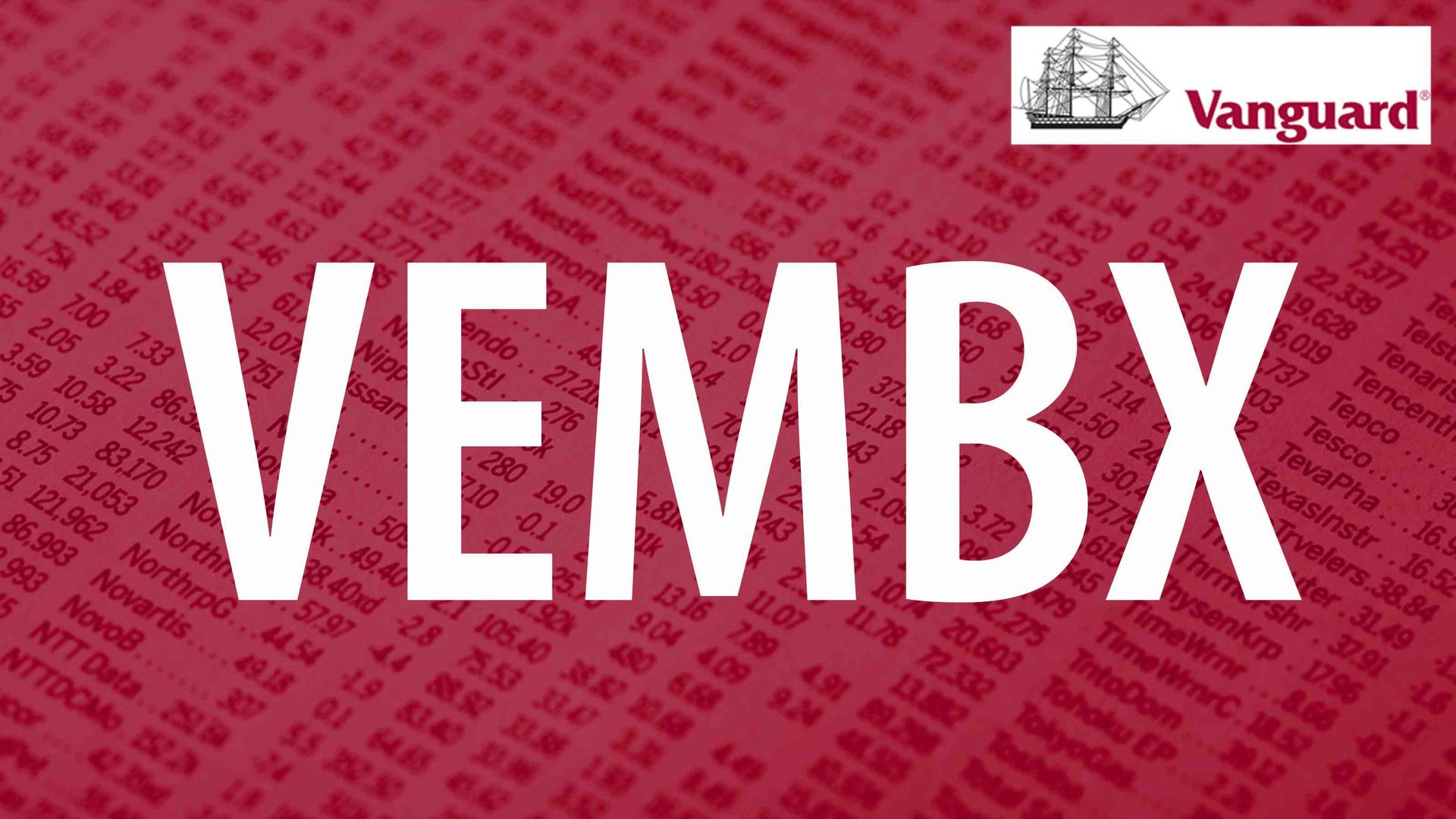
Vanguard Emerging Markets Bond
- Symbol: VEMBX (opens in new tab)
- 1-year return: -4.3%
- 5-year return: 3.3%
- 10-year return: N/A
- Yield: 6.9%
- Expense ratio: 0.55%
The focus: Dollar-denominated debt in developing countries. Yield: 6.9%.
The process: Vanguard's Dan Shaykevich and Mauro Favini invest primarily in government bonds.
The track record: Over the past year, this fund’s total return – change in net asset value plus interest payments – was a negative 4.3%. The typical emerging-markets bond fund lost 6.7%.
The last word: The stars are aligning for emerging-markets bonds. High yields are a plus; high commodity prices help many emerging-markets producers; and China’s reopening is a boon, too.

Vanguard High-Yield Corporate
- Symbol: VWEHX (opens in new tab)
- 1-year return: -4.1%
- 5-year return: 2.7%
- 10-year return: 3.7%
- Yield: 6.8%
- Expense ratio: 0.23%
The focus: Short- to medium-maturity debt issued by firms with junk credit ratings. The fund yields 6.8%
The process: Manager Michael Hong, of subadviser Wellington Management, took on a comanager last summer. At the same time, Vanguard's in-house bond pickers stepped in to manage a third of the fund's assets, or about $8 billion. Both subadvisers emphasize the highest-quality junk, which helps lower the fund's risk profile.
The track record: High-Yield Corporate has delivered above-average returns with below-average risk for the past five and 10 years. And it held up better than its peers over the past 12 months.
The last word: Recessions aren't ideal for junk bonds, as the risk of default may rise. But strategists say these companies look financially stronger than usual, and current yields resemble stock-like returns. Just step cautiously.

Vanguard Short-Term Investment Grade
- Symbol: VFSTX (opens in new tab)
- 1-year return: -3.6%
- 5-year return: 1.2%
- 10-year return: 1.4%
- Yield: 4.8%
- Expense ratio: 0.20%
The focus: High-quality, short-maturity debt. The fund yields 4.8%.
The process: Lead managers make the big-picture decisions; bond-sector specialists pick the securities. Currently, 80% of the fund is invested in corporate debt. The rest is spread among government, securitized and foreign debt.
The track record: The fund lost 3.6% over the past year, lagging peers. But over 10 years, it ranks in the top 25% of its category.
The last word: This is a sensible choice for short-term bond exposure.
Nellie joined Kiplinger in August 2011 after a seven-year stint in Hong Kong. There, she worked for the Wall Street Journal Asia, where as lifestyle editor, she launched and edited Scene Asia, an online guide to food, wine, entertainment and the arts in Asia. Prior to that, she was an editor at Weekend Journal, the Friday lifestyle section of the Wall Street Journal Asia. Kiplinger isn't Nellie's first foray into personal finance: She has also worked at SmartMoney (rising from fact-checker to senior writer), and she was a senior editor at Money.
-
-
 For Best Tax Savings, Year-Round Tax Planning Is Essential
For Best Tax Savings, Year-Round Tax Planning Is EssentialFor optimal, ongoing tax reduction, consider employing these nine strategies throughout the entire year.
By Andy Leung, Private Wealth Adviser • Published
-
 From SECURE Act to SECURE 2.0: Is Your Estate Plan Safe?
From SECURE Act to SECURE 2.0: Is Your Estate Plan Safe?The ever-evolving legislative landscape provides both challenges and opportunities when it comes to making plans for your retirement and your estate. A key focus: tax planning.
By Lindsay N. Graves, Esq. • Published
-
 The Kiplinger 25: Our Favorite No-Load Mutual Funds
The Kiplinger 25: Our Favorite No-Load Mutual FundsThe Kiplinger 25 The Kiplinger 25 is a list of our top no-load mutual funds that have proven capable of weathering any storm.
By Nellie S. Huang • Published
-
 High Yields From High-Rate Lenders
High Yields From High-Rate LendersInvestors seeking out high yields can find them in high-rate lenders, non-bank lenders and a few financial REITs.
By Jeffrey R. Kosnett • Published
-
 Value Investing Is Back
Value Investing Is BackValue investing beats growth in the long run, and the best way to participate in value is through funds.
By James K. Glassman • Published
-
 Time to Consider Foreign Bonds
Time to Consider Foreign BondsIn 2023, foreign bonds deserve a place on the fringes of a total-return-oriented fixed-income portfolio.
By Jeffrey R. Kosnett • Published
-
 International Stocks: Time to Explore Investments Abroad
International Stocks: Time to Explore Investments AbroadIt's time for American investors to pack up their stay-at-home strategy and go shopping abroad for international stocks.
By Nellie S. Huang • Published
-
 Investors Nearing Retirement Show Patience With Markets
Investors Nearing Retirement Show Patience With MarketsDespite last year’s upheaval, many investors are sticking with long-term plans and tightening their budgets instead of moving money out of stocks and bonds.
By Matthew Sommer, Ph.D. CFA® • Published
-
 Stock Market Today: Stocks Rise Ahead of Fed
Stock Market Today: Stocks Rise Ahead of FedBank headlines dominated another choppy day of trading on Wall Street.
By Karee Venema • Published
-
 Stock Market Today: Stocks Fall After First Republic Bank Suspends Dividend
Stock Market Today: Stocks Fall After First Republic Bank Suspends DividendThe embattled lender's dividend cut was just the latest sign of instability in the banking industry.
By Karee Venema • Published










